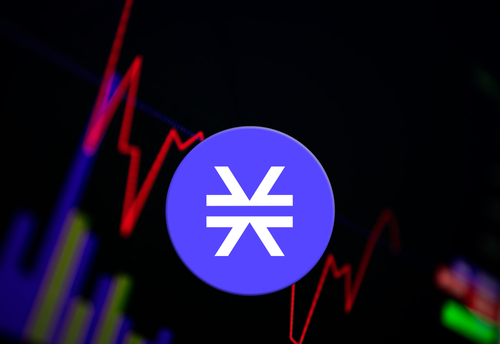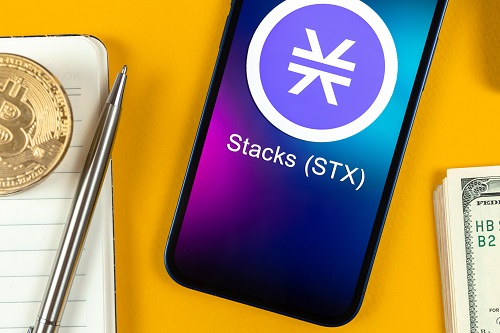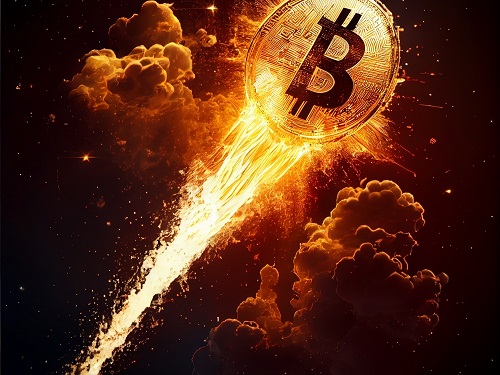How to Buy Stacks (STX) in 3 Simple Steps
Stacks is a blockchain that uses smart contracts to enable decentralised applications (dApps) that are anchored to the Bitcoin blockchain. This extends the functionality of Bitcoin without compromising its high level of security.
This page explains what Stacks does in more detail and demonstrates how to buy Stacks simply and conveniently.
How to Buy Stacks
You can purchase Stacks online using a cryptocurrency exchange. This is the easiest way to buy and sell cryptocurrencies—all you need is a computer or mobile device. See below for our top picks of platforms that offer Stacks and simple steps to buy Stacks.
1. Choose a platform
The first step of your investment journey is to sign up with one of the trusted brokers or exchanges put forward by us for you. These platforms will ensure that you can set up your first crypto account with ease, convenience, and at a minimal cost.
2. Create and fund your account
Fill out your details in order to create an account with your chosen platform. The majority of brokers and exchanges will ask you for some form of ID such as a Passport, and some proof of residence to verify your account. Then, you can make a deposit using payment methods such as PayPal, Visa, or Mastercard among others.
3. Buy Stacks
Once you’ve funded your account, you’re ready to buy Stacks (STX). To do this, select a trading pair that best matches the local currency kept in your account. For instance, if your account is registered in the UK, you’ll want to pick the STX/GBP pair.
What Is Stacks?
Stacks is a blockchain connected to the Bitcoin network that looks to make Bitcoin more “programmable”. This allows Stacks to extend the use cases of Bitcoin’s blockchain by building smart contracts and dApps on it. This means Stacks users can enjoy decentralised finance (DeFi), NFTs, and other features while benefiting from the iron-clad security of the Bitcoin blockchain.
One of the most common criticisms of Bitcoin is that it has limited functionality compared to smart contract blockchains like Ethereum. Ethereum’s programmability has enabled DeFi, NFTs, and the metaverse—arguably the hottest topics in crypto. Stacks brings this functionality to Bitcoin, with DeFi and NFT projects already up and running.
Stacks’ consensus mechanism, Proof of Transfer (PoX), makes this possible. Stacks transactions, including smart contracts, are processed on the Stacks blockchain, then batched together and recorded on the Bitcoin blockchain. This creates a symbiotic relationship whereby Bitcoin gains functionality, and Stacks gains security.
Ways to Invest in Stacks
When it comes to buying STX, there are a few methods you can leverage to see the best returns on your investment. Many investors look to hold onto their investment for extended periods of time so they can accumulate profits. Alternatively, some investors also look to invest for shorter terms with a view to realising quicker gains.
Buy and hold Stacks
Buying and holding Stacks is usually the most used and reliable investment strategy given the sudden spikes and drops in the value of STX. This enables investors to benefit in the long term as long as the price of STX consistently moves in an upward direction.
Best Stacks Wallets
You have a range of options when it comes to managing the safe keeping of your STX tokens. Most brokers and exchanges will offer you custodian services through which you can store your crypto in internal web wallets.
Alternatively, some investors tend to take self-custody of their STX tokens by employing third-party software or reliable hardware wallets like Trezor, BitBox, and Ledger where they can store their coins manually on a physical device.
Trade Stacks
Rather than holding onto Stacks for long periods of time, some investors like to capitalise on the fluctuations of the market price of Stacks by trading their STX tokens on exchanges. While this strategy can be rewarding when done correctly, it is important to keep in mind that even the most seasoned traders are prone to making costly mistakes given the volatility of STX.
As traders will often only hold onto their STX for short periods of time, they usually find it more convenient to store their tokens on web wallets available on their preferred exchanges instead of putting them in private wallets. This is because regularly transferring tokens between private and web wallets can be inconvenient and may result in additional costs in the form of transaction or “gas” fees.
Should I Buy Stacks Now?
Doing your own research on the fundamentals, potential risks, and rewards should go hand in hand with any decision to invest in Stacks. Here are a few factors you may want to take into account when weighing things up.
Stacks contributes to the expanding number of use cases involving Bitcoin, bringing DeFi and NFT projects to the “king of crypto”. Stacks also uses special micro-blocks to provide ultra-fast transaction speeds at low costs; a problem Bitcoin has struggled with in the past. This functionality is very attractive and could cause increased demand for STX.
Stacks also offers a rare opportunity to earn BTC without mining it, via the Proof of Transfer consensus mechanism. “Stacking” (or locking up) STX tokens helps to secure the Stacks network, and stackers are rewarded in BTC for their trouble. This chance to earn Bitcoin passively could create demand for STX, given the popularity of Bitcoin and the inaccessibility of mining.
The Stacks ecosystem is still in an early stage of its development but has demonstrated an impressive rate of growth with a flurry of new projects expected to be built and launched on the blockchain in the coming years—this could bode well for the price of STX going forwards.
Frequently Asked Questions
Related Content
Cronos (CRO)
Celsius (CEL)
SushiSwap (SUSHI)
Hamster (HAM)
Stratis (STRAT)
Libra (LIBRA)
Top Stacks Stories

Bullish pattern points to a Stacks (STX) recovery as this memecoin steals the show
21 December 2024 Stacks (STX) is trading within a bullish channel, with key support at $1.75. The iDEGEN (IDGN) memecoin…
PENGU price prediction as traders buy iDEGEN, STX
18 December 2024 The price of Pudgy Penguins (PENGU) fell amid selling pressure post-airdrop. The PENGU token trades 50% off…
Stacks (STX) prepares for Nakamoto upgrade: here’s what to expect
26 August 2024 Stacks, the largest Bitcoin layer-2 network, is on the verge of a transformative upgrade known as Nakamoto.…
Stacks price soars amid spike in DeFi activity on Bitcoin L2
5 June 2024 Stacks (STX) price soared 11% to hit highs of $2.40 as Bitcoin broke above $71k. STX has…
Grayscale launches investments trusts for Stacks and Near Protocol
23 May 2024 Grayscale announced trusts for Near Protocol and Stacks. Crypto market is upbeat ahead of a potentially huge…
